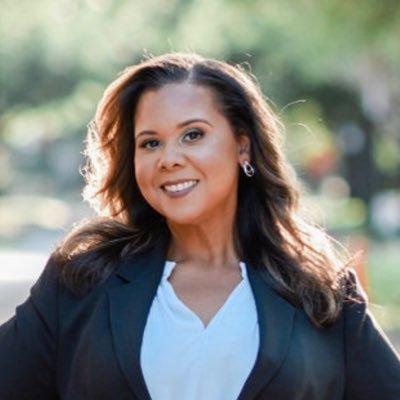How to make complex and complicated decisions, with public participation

In the realm of decision-making, the onus on leaders to differentiate between “complicated” and “complex” decisions cannot be overstated. This is especially crucial for those at the upper echelons of leadership, where the stakes are high and the impact of decisions is far-reaching.
Although these terms are often used interchangeably, they are fundamentally distinct in nature and require different approaches for effective resolution. In this article, we will recognize the realm of all decisions falls on a spectrum from entirely complicated to entirely complex. We will divide this spectrum into four quadrants specifically to highlight the role of public participation within each of these quadrants.
A double-edged sword
Leaders often rise through the ranks due to their exceptional ability to make sound decisions. Usually, it is a teacher or teacher leader who can “take the bull by the horns” and get stuff done who finds themselves being tapped on the shoulder by a well-meaning principal who says, “you should consider getting a degree in education leadership.”
Early in their careers, they may find themselves in roles (instructional coach, teacher leader, dean and assistant principal) that primarily involve “complicated” decisions. These are problems with clear parameters and solutions that can be deduced through expertise and analytical reasoning. Success in these situations reinforces the leader’s confidence in their own expertise, which is a crucial skill but can become a double-edged sword.
As leaders ascend to higher levels of responsibility, the nature of the decisions they face frequently shifts from complicated to complex. Here, the leader’s deeply ingrained reliance on technical expertise can become a liability.
The skills that served them well in navigating complicated problems might actually impede their ability to manage complex ones. Cognitive biases, born from years of specialized experience, can limit their perspective and make them less receptive to alternative approaches. It is a dangerous place to know the answer before you’ve asked the question.
Complicated decisions: Complicated decisions have a single optimal solution that can be reached through technical expertise and analytical reasoning. For example, the disassembling and reassembling of an aircraft engine is a complicated task. It requires specialized knowledge, precise calculations and stringent procedures.
In such cases, there is little room for subjective interpretation; there is a “right” way to accomplish the task based on established engineering principles. Many of the tasks we undertake in education are complicated.
Complex decisions: Contrastingly, complex decisions are inherently unknowable and fluid, involving multiple variables that interact in unpredictable ways. For instance, managing a diverse team is a complex task. There is no one-size-fits-all approach, and the “right” decision can vary depending on a multitude of factors like team dynamics, individual personalities and organizational culture. Here, specialized knowledge might even become a hindrance due to cognitive biases that prevent a broader perspective.
Framing the decision
As education leaders, we are often confronted with decisions that demand immediate attention. The first and perhaps most crucial decision a leader must make is categorizing the issue as either complicated or complex, and then determining where it falls on that spectrum.
This classification sets the stage for the strategy to adopt and the extent of public participation required. This breakdown will help illustrate:
Fully complicated: The purpose with the public is to inform in order to create buy-in. In cases where the decision is complicated and the primary communication purpose is to inform, leaders might only need to disseminate the technical information to get buy-in from stakeholders. For instance, explaining the blueprint of a new building to the community primarily requires expertise in architecture and engineering.
Mostly complicated with a hint of complex: The purpose with the public is to consult in order to create engagement. Sometimes, complicated decisions still require input from the public. The implementation of a new records management system would require consultation with office, clerical, technology and administrative staff who will use the system, even though the decision is mostly complicated.
Mostly complex with a hint of complicated: The purpose with the public is to involve with a goal of seeking ownership. For complex decisions where leaders aim for stakeholder ownership, like setting policies for remote work, a more inclusive decision-making process is necessary. Input from employees who will be directly impacted can provide valuable insights that may not be apparent through a top-down approach.
Fully complex: The purpose with the public is to collaborate with a goal of ownership. In scenarios where the decision is highly complex and demands full collaboration, such as when to close schools, when to run a bond campaign or when to rezone, the public’s role shifts from being mere participants to co-creators. Here, a savvy leader recognizes the people most impacted by a decision should have the greatest voice in helping make that decision.
Welcoming diverse perspectives
Public participation can vary from minimal involvement to co-creation, depending on the nature of the decision. The public could be a specific group of stakeholders or a broader community, and their role can shift from being mere informants in complicated decisions to active collaborators in complex ones.
In any case, their involvement can bring diverse perspectives, enhance transparency and add layers of checks and balances.
Giving a voice to those most impacted
Navigating the landscape of decision-making is a nuanced endeavor. Understanding whether a decision is complicated or complex is the first step in identifying the appropriate level of public participation.
Leaders should employ this framework as a tool to determine the extent to which they involve the public in decision-making processes. By doing so, not only will the decision be more robust, but it will also be more aligned with the needs and expectations of those it impacts.
In today’s ever-changing environment, making the right decisions is more critical than ever. Therefore, leaders should leverage the complicated-complex spectrum to enhance decision-making and ensure that those most impacted have a voice in the process.






